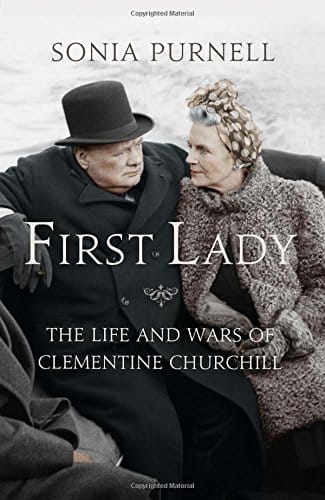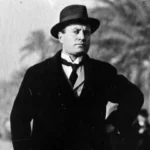A Life Cherished and Mourned
Have you heard the name Marigold Churchill? As the daughter of the legendary Winston Churchill, her life, though brief, left an unforgettable mark on her family and continues to intrigue history enthusiasts. Let’s step back in time to learn about this remarkable little girl whose memory resonated through the decades.
Marigold Frances Churchill, the youngest darling of Winston and Clementine Churchill, was born in 1918, just days after the turmoil of World War I concluded. Her arrival signified hope and new beginnings, a beacon of joy for the Churchill family.
Tragically, this joy was short-lived. In 1921, at the tender age of two, Marigold succumbed to sepsis. Medical care in the early 20th century was a far cry from what we know today. Sepsis, a severe infection often treatable now, was a formidable foe at the time.
The Impact of Loss
The death of young Marigold devastated Winston and Clementine. Even Winston, known for his unwavering strength, was left heartbroken. The weight of her passing stayed with Clementine for the rest of her life. While it’s impossible to know for sure, many historians suggest this tragedy profoundly impacted the Churchill family dynamics and the choices they made.
Despite the unimaginable pain, the Churchills ensured Marigold’s memory was kept alive. Initially laid to rest in Kensal Green Cemetery, her remains were moved to the Churchill family plot in Bladon in 2020. This act, after all those years, speaks volumes about the enduring love and the desire to keep their daughter close, even in death.
A Story That Transcends Time
Marigold’s story prompts reflection on the advancements of modern medicine. In the early 1900s, many illnesses now treatable were perilous. This contrast underscores the importance of continued medical research and the remarkable progress made in healthcare.
Though her life was brief, Marigold’s story resonates. It poignantly reminds us of life’s precious and sometimes fragile nature, the depth of familial love, and the gaping hole left by loss. Above all, it showcases the resilience of the human spirit, finding ways to endure even amidst unimaginable sorrow. Remembering Marigold, even now, honors the impact she had and keeps a part of her spirit alive.
What Happened to Winston Churchill’s Daughter Marigold?
To truly understand the impact of Marigold’s passing, we need to consider the context of the Churchill family life in the early 20th century. Winston and Clementine, deeply entrenched in the political sphere and social whirl of their time, balanced demanding roles while raising a young family. The arrival of Marigold in 1918, as World War I drew to a close, brought immense joy. Affectionately called “Duckadilly” by her father, she quickly became a cherished member of the family.
The summer of 1921, however, brought unimaginable sorrow. At just two years old, Marigold succumbed to septicemia, a severe infection. The loss was utterly devastating for Winston and Clementine. While he rarely spoke openly about Marigold’s death, glimpses into his personal letters and conversations with confidants paint a picture of profound sadness.
The events leading to Marigold’s death have been a subject of discussion among historians. Some believe that the demands of Winston and Clementine’s public lives may have inadvertently led to less direct care for their young daughter. With both parents engaged in their work, Marigold spent significant time under the care of a French governess, a common practice then. Whether this played a role in the tragedy remains a topic of debate.
Marigold’s passing left an enduring mark on the Churchill family. Her memory was held dear, and in 2020, her remains were moved to rest alongside her family in a poignant display of enduring love. Marigold’s story serves as a stark reminder of the advancements in healthcare we often take for granted today and underscores the importance of ongoing medical research and our ever-evolving understanding of childhood illnesses.
What Happened to Winston Churchill’s Other Children?
Winston and Clementine Churchill had five children, each navigating the complexities of life in the shadow of their famous father.
- Diana Churchill: The eldest, Diana, shared a close bond with her father and inherited his political acumen. However, she struggled with mental health throughout her life, facing bouts of depression and two divorces. Tragically, Diana died by suicide in 1963, a loss that deeply affected Winston, though he rarely spoke about it publicly. Some experts believe her story sheds light on the unique challenges faced by children of famous parents and the stigma surrounding mental health during that time.
- Randolph Churchill: Winston and Clementine’s only son, Randolph, followed in his father’s political footsteps. However, he struggled to emerge from his father’s shadow, leading to a complex and often tumultuous relationship. Despite their differences, Randolph shared his father’s wit and intellect.
- Sarah Churchill: Known for her rebellious spirit and artistic talents, Sarah pursued a career in acting. She enjoyed moderate success on stage and screen and was known for her vibrant personality and independent nature.
- Mary Soames: The youngest of the Churchill children, Mary, became known for her stability and dedication to her family. She authored several books, including a well-regarded biography of her mother, Clementine. Mary also followed in her father’s footsteps, dedicating her life to public service and becoming Baroness Soames.
The lives of Winston Churchill’s children offer a glimpse into the complexities of family dynamics, even within a prominent and influential family. They navigated personal triumphs and tragedies, leaving behind their own unique legacies.
Are Any of Winston Churchill’s Family Alive Today?
While Winston and Clementine Churchill and their five children are no longer with us, their legacy continues through their numerous grandchildren and great-grandchildren. The Churchill family tree extends through various fields, with descendants pursuing careers in politics, the arts, and other professions.
One notable descendant is Nicholas Soames, Baron Soames of Kilverstone, the son of Mary Soames. Like his illustrious great-grandfather, Nicholas pursued a career in politics as a Conservative MP, serving for many years in the House of Commons.
The continued presence of Winston Churchill’s descendants ensures that his impact resonates through generations, keeping his memory alive in the 21st century.
Interested in learning more about the fascinating figures connected to the Churchill family? Dive into the captivating world of fashion with Rudi Gernreich, the revolutionary designer who shattered conventional norms. Or, get the inside scoop on the enigmatic Danny Koker and unravel the truth behind his rumored illness. You can also discover the remarkable achievements of Lee Chim Yee, the pioneering educator who dedicated her life to empowering future generations. Lastly, uncover the untold story of Jerry McSorley, the fearless journalist who relentlessly pursued truth and justice.
- Crypto Quotes’ Red Flags: Avoid Costly Mistakes - June 30, 2025
- Unlock Inspirational Crypto Quotes: Future Predictions - June 30, 2025
- Famous Bitcoin Quotes: A Deep Dive into Crypto’s History - June 30, 2025
















